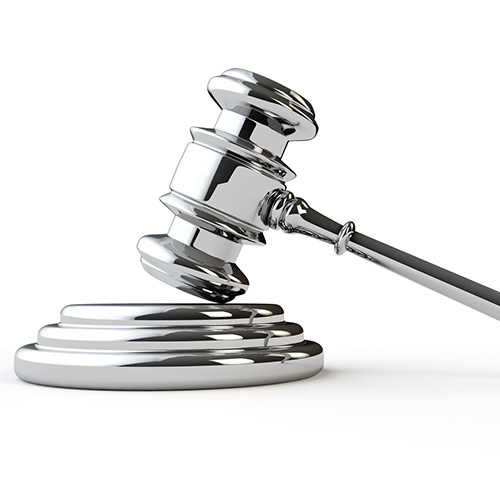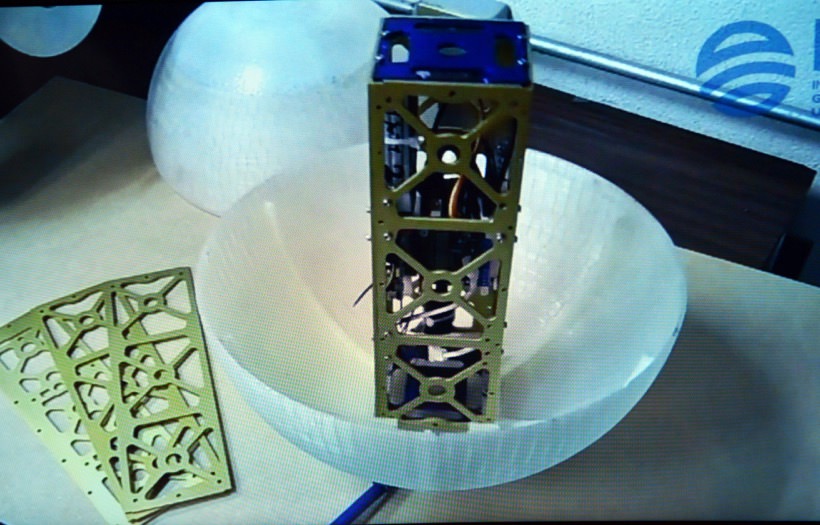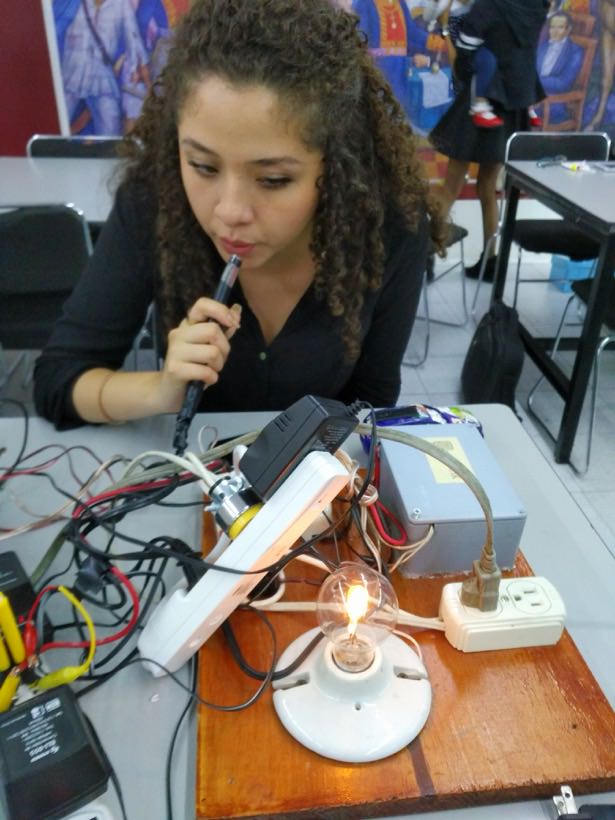By Santiago Nadal SANTIAGO NADAL, Lawyer Specialized in IP Law Director-SN Abogados, [email protected], www.snabogados.com, Barcelona, Spain.
The new directive makes uniform the EU and national rules, establishes a minimum protection, EU-wide, and it establishes general rules of interpretation, which will help the courts in all the EU countries.
In 2009, Santiago Nadal established his own law firm, SNAbogados, a Barcelona, Spain, law firm, specializing in intellectual property law, unfair competition, competition law, publicity, distribution and franchise law, and product liability and labeling. The firm also provides legal advice in business and corporate law, especially in conflicts between partners and administrators liability. Mr. Nadal is the Spain country chair for DRI Europe, and is also a member of the IADC and the Barcelona Bar Association.
On June 8, 2016, the European Union issued an important directive on trade secrets. It is officially known as Directive (EU) 2016 / 943 of the European Parliament and the Council on the Protection of Undisclosed Know-How and Business Information (Trade Secrets).
This directive has been in the cupboard since then because it is not directly applicable, in principle. Each European Union (EU) member state needs to “transpose” it into national law, and they have until June 9 . . . 2018! If, under certain circumstances, any member state has not done its homework, the directive could be directly applied by the EU national courts, in “horizontal” relationships between parties. But this is to be studied case by case because it is not a clear issue.
This directive is important: it covers an area currently lacking good EU protection. Many of the EU countries already had rules and laws to protect business know-how. For example, Spain has a very well-construed Law on Unfair Competition, which has been applied for more than 20 years. But the rules differed from country to country. For example, not all the EU states had provisions on cease-and-desist measures in connection with trade secrets.
The new directive changes the panorama: it makes uniform the EU and national rules on trade secrets and establishes a minimum protection, EU-wide, and it also establishes general rules of interpretation, which will help the courts in all the EU countries.
A Long Preamble—to Understand the Directive
Similar to many other EU directives and regulations, the Trade Secrets Directive has a long Preamble . . . with . . . 40 “whereas” points! The Preamble is important because it will help to interpret the directive; it also sets the rules that national courts will have to take into consideration when applying both the directive and their local laws on unfair competition or on what the EU countries refers to as “passing off,” and those laws protecting know-how.
The Preamble refers to general considerations, such as what should be considered know-how or trade secrets worth protecting, or what confidentiality involves. It insists on the need for a homogeneous and wide national definition of the following:
- “Trade secret,” including commercial and technological information, and the need to protect it; and
- “Unlawful” appropriation, use, or disclosure and the need to impede it from happening.
The Preamble makes clear that know-how has to be specially protected as a trade secret if it is to be defended in court, by means of measures such as access restrictions to the knowledge and confidentiality clauses.
The Preamble highlights the importance of trade secrets for small and medium-sized enterprises (SMEs), which the EU explicitly defines as enterprises that have certain staff, turnover, and balance-sheet-total ceilings, as a means of protecting their knowledge and investigation, and the need for swift and effective protection measures. But it clarifies that protection should not be used to prohibit independent innovation and development by third parties, nor restrict freedom of speech or information.
It also sets the way to calculate indemnifications and permits the posting of bonds by defendants, to avoid interim measures ordered by a court. And it highlights the EU law principle of “proportionality”: no measure beyond know-how protection should be applied to jeopardize the freedom of competition, and indemnifications should take into account the circumstances of the case. It accepts that “sanctions” or fines are can be applied.
The Preamble differentiates between final decisions by the courts and preliminary injunctions (and the Articles afterward specifically make this a rule), and it explains why and when these would apply. It also justifies why all court decisions can also be applied to importations from outside the EU.
It makes clear that the Trade Secrets Directive should not be used to restrict fair competition. This is important, in practice, since businesses frequently use unfair competition court actions to make life difficult for their competitors. But it justifies the publishing of the courts decisions.
The Preamble makes clear that the EU rules are a minimum threshold, but each country can apply stricter protection. And it makes clear, too, that the directive should not be applied to restrict or to distort the EU competition rules, specifically Articles 101 and 102 of the Treaty on the Functioning of the European Union.
The Specific Articles: Pan-European Rules
Articles 1 to 16 of the Trade Secrets Directive apply the previous general considerations to day-to-day legal work.
The Working of Trade Secrets
The directive (Article 1) insists that member states may have stricter rules to defend trade secrets and that it only establishes a minimum protection. And it repeats that know-how protection cannot affect or limit freedom of speech or employees’ right to use their knowledge (which is not a secret), nor their experience or skills.
Article 2 of the directive includes important definitions. For example, it defines “trade secret” as information that is
- Not known or readily accessible within the circles normally dealing with this kind of information;
- With commercial value as secret; and
- Kept secret, by means of reasonable steps.
This wording is similar to previous definitions of protectable know-how that was issued by the EU courts.
The Trade Secrets Directive (Article 3) considers that acquisition of trade secrets is lawful when it is done through
- Independent discovery or creation; hence, know-how protection does not consider unlawful independently arriving upon the same result (as in patents or designs);
- Study, disassembly, or testing of products available to the public or legally and freely acquired; hence, reverse engineering is not forbidden.
The Trade Secrets Directive subjects these considerations to the law of each EU state member. So it will consider lawful acquisition that which the national law considers lawful acquisition.
The Trade Secrets Directive (Article 4) deems it illegal to acquire a trade secret, without the consent of it holder, if acquisition is done through (1) the unauthorized access of documents, objects, materials, substances, or electronic files connected with the trade secret; or (2) activities that are contrary to “honest commercial practices.”
Article 4 also deems it illegal to use or to disclose a trade secret, without the consent of the trade secret owner, when the user or discloser (1) acquired the trade secret unlawfully, or (2) breached a confidentiality agreement or any other duty (contractual or legal) not to disclose or to limit use.
These prohibitions against acquiring, using, or disclosing include cases in which the person involved ought to have known that it was unlawful to use the trade secret. They also cover producing, offering, or placing in the market infringing goods.
Limits to Trade Secret Protection
Articles 5 through 8 establish certain reasonable limits to avoid “excessive” protection of know-how. For example, the court protection cannot curtail freedom of speech, prevent a disclosure to reveal a wrongdoing, or grant protection at the expense of a “legitimate interest.” This last exception may help in cases when the directive is used to attempt to hamper competing businesses.
This section includes a general limit upon the measures to be applied. They should be fair, reasonable, and effective. They should be proportional to the case and avoid the creation of barriers to trade within the EU.
Finally, this section includes a limitation period (Article 8), which passes along to the EU member states the responsibility to establish national procedural rules. But it fixes a maximum period of six years for the national limitation-period duration.
Minimum Legal Remedies—EU Countries May Have Stricter Rules
To protect trade secrets, the directive orders member states to ensure legal civil redress for the unlawful acquisition, use, and disclosure of trade secrets. (Articles 9 et seq.) But the legal remedies cannot create barriers to trade within the EU internal market.
The legal remedies will be subject to a limitation period of a maximum of six years, as I previously mentioned.
Court Proceedings and Injunctions
The Trade Secrets Directive establishes the rule that the legal proceedings for trade secret infringement shall ensure that the parties involved (including the claimant and the defendant) respect the confidentiality of the trade secret. This includes restricted access to documents or hearings, and even to the complete text of the court’s decision.
The directive (Article 10) orders that member states ensure that the national courts order precautionary injunctions, when needed. They include injunctions ordering
- An infringer to cease and desist in the use of the trade secret, or to cease and desist in the manufacture or commercialization of the infringing products, or a combination of these;
- Seizure of infringing goods, including imported goods.
Member states need to give the infringer the possibility of posting a bond to lift or avoid the injunction.
The provisional injunction can only be applied if the court is satisfied that the claimant is the legal owner of the trade secret. The court must take into account:
- The value of the trade secret
- The measures taken to protect it
- The activity of the defendant when acquiring, using, or disclosing the trade secret
- The effect of use or disclosure
- The legitimate interests of third parties.
This is important since it gives lawyers tips about what is considered a trade secret, according to the directive.
In general terms, the court must always take into account the public interest and citizen’s fundamental rights.
The claimant that obtains the injunction has to serve a claim on the merits within a “reasonable” period, according to the member state’s rules, or if the state does not have such rules, within 20 working days (or 31 calendar days, whichever is longer).
The party applying for an injunction must post a bond to ensure compensation for damages suffered by the defendant. And this party will have to compensate the defendant if the injunction is lifted or found groundless afterward.
The Trade Secrets Directive (Article 12) establishes a list of possible interim measures that could be applied by the court to the trade secret, upon the claimant’s request, and at infringer’s expense:
- Cessation of, or prohibition against, its use or disclosure
- Prohibition against manufacturing, storing, offering, or placing it in the market
- Prohibition against import and export of it
- Prohibition against destroying documents, objects, material, substance, or electronic files that contain or embody it
- Its delivery to the claimant.
The claimant can also request:
- Recall of goods or that they are deprived of their infringing quality
- Destruction or withdrawal of goods from the market.
These measures are not substitute remedies for any claim for possible damages and losses.
The preliminary measures can be lifted, by the court, if the defendant pays pecuniary compensation to the injured party. But certain circumstances should be met:
- The defendant must have not known that the trade secret was unlawfully obtained
- The injunction measures if they take effect would cause disproportionate harm to the defendant
- The pecuniary compensation is reasonable.
This pecuniary compensation cannot exceed the “hypothetical royalty” that the defendant would have paid to the claimant to use the trade secret.
Consequences of Breach of Trade Secret: Indemnification, Publicity, and Fines
The Trade Secrets Directive (Article 14) establishes that the infringer acting in bad faith or not diligently (“who knew or ought to have known”) must pay damages. The amount should be appropriate (proportional to) the prejudice suffered by the claimant.
- The directive establishes some criteria to calculate damages, but it is not exhaustive. They include the following:
- Profits lost
- Unfair profits obtained by the infringer
- Moral prejudice.
Alternatively, the damages can be calculated on the basis of the “hypothetical royalty” that would have been paid, at a minimum.
Consequences of Breaching the Court’s Orders
The Trade Secrets Directive (Article 16) establishes another kind of sanction: the publication of the court decision against the infringer. This is not automatic. The court must take into account the following:
- The value of the trade secret
- The infringer’s conduct
- The effect of the unlawful use or disclosure
- The likelihood of repetition
- The infringer’s privacy and reputation.
Article 15 also provides for sanctions against the infringer, if the infringer does not comply with the court injunctions. It specifically refers to fines. But other kinds of sanctions could be requested by the claimant, which may vary, by country.
Practical Measures to Protect Trade Secrets
In practical terms, the directive will push companies to take measures to protect their know-how. Although the directive in not clear about which specific measures companies will need to take, if they want to keep information within their control, in my practice, I have seen that it is advisable to do the following:
- Identify the information or know-how that needs to be protected by reviewing knowledge, data, and related documents, among other things.
- Signal that information is secret, if it secret, so anybody dealing with the information and documents is aware of it.
- Afix, in writing, the different levels of confidentiality to documents and specify which employees may access which documents, with clear and obligatory rules.
- Apply protective measures for the confidential information, including software protection.
- Apply confidentiality rules and policies and review them periodically.
- Make employees and contractors aware that the rules are obligatory.
- Decide which responsible persons will control and apply the security the measures.
- Include confidentiality clauses in the contracts with employees and contractors.
















